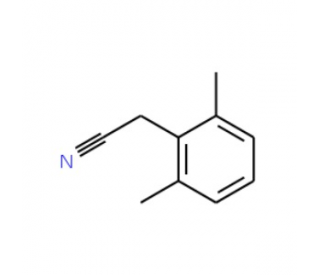詳細說明
Species Reactivity
Human
Specificity
Detects human ENPP-1 in direct ELISAs and Western blots. In direct ELISAs, less than 3% cross-reactivity with recombinant human ENPP-2 and recombinant mouse ENPP-2 is observed after removal of cross-reactivity with human ENPP-2.
Source
Polyclonal Sheep IgG
Purification
Antigen Affinity-purified
Immunogen
Mouse myeloma cell line NS0-derived recombinant human ENPP-2-1-2
Asp49-Trp144 (ENPP-2), Val191-Leu591 (ENPP-1), Asn532-Ile863 (ENPP-2). Cross-reactivity with human ENPP-2 was removed from the final product.
Accession # Q13822 (ENPP-2) P22413 (ENPP-1)Formulation
Supplied in a saline solution containing BSA and Sodium Azide.
Label
Alexa Fluor 488
Applications
Recommended
ConcentrationSample
Flow Cytometry
5 μL/10 6 cells
See below
Please Note: Optimal dilutions should be determined by each laboratory for each application. are available in the Technical Information section on our website.
Data Examples
Flow Cytometry | Detection of ENPP?1 in HepG2 Human Cell Line by Flow Cytometry. HepG2 human hepatocellular carcinoma cell line was stained with Sheep Anti-Human ENPP?1 Alexa Fluor? 488?conjugated Antigen Affinity-purified Polyclonal Antibody (Catalog # FAB6136G, filled histogram) or isotype control antibody (Catalog # , open histogram). View our protocol for . |
Preparation and Storage
Shipping
The product is shipped with polar packs. Upon receipt, store it immediately at the temperature recommended below.
Stability & Storage
Protect from light. Do not freeze.
12 months from date of receipt, 2 to 8 °C as supplied.
Background: ENPP-1
Ectonucleotide pyrophosphatase/phosphodiesterase 1 (ENPP-1) is a transmembrane glycoprotein that hydrolyzes nucleotides and nucleotide derivatives with the formation of nucleotide-5’-monophosphates. It is inserted into the plasma membrane by an N?terminal transmembrane domain. Human ENPP-1 has a small N-terminal cytoplasmic domain and a large C-terminal region containing two somatomedin B-like domains, a catalytic domain and a nuclease-like domain in the extracellular space (1). Defects in the ENPP-1 gene cause arterial calcification and bone mineralization abnormalities (2). ENPP-1 polymorphism or overexpression is also associated with obesity, type II diabetes and insulin resistance, which makes modulation of ENPP-1 activity one of the targets to treat insulin resistance and related diseases (1).
References:
Goldfine, I.D. et al. (2010) Endocrine Reviews. 29:62.
Hessle, L. et al. (2002) Proc. Natl. Acad. Sci. 99:9445.
Long Name:
Ectonucleotide Pyrophosphatase/Phosphodiesterase 1
Entrez Gene IDs:
5167 (Human)
Alternate Names:
ectonucleotide pyrophosphatase/phosphodiesterase 1; E-NPP 1; ENPP1; ENPP-1; Ly-41 Antigen; M6S1; M6S1NPP1; Membrane component chromosome 6 surface marker 1; membrane component, chromosome 6, surface marker 1; NPP1; NPPS; NPPSalkaline phosphodiesterase 1; PC1; PC-1; PCA1; PCA1ARHR2; PDNP1; PDNP1ectonucleotide pyrophosphatase/phosphodiesterase family member 1; Phosphodiesterase I/nucleotide pyrophosphatase 1; plasma-cell membrane glycoprotein 1; Plasma-cell membrane glycoprotein PC-1











 粵公網(wǎng)安備44196802000105號
粵公網(wǎng)安備44196802000105號